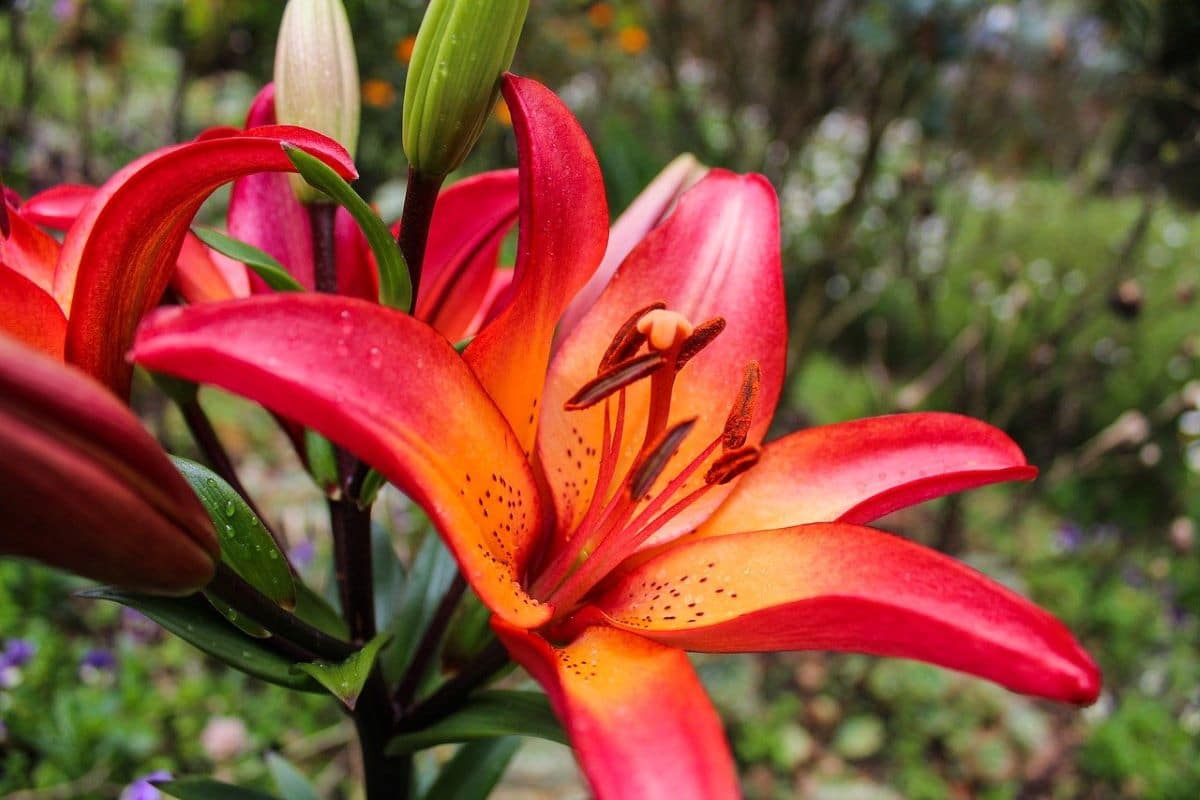
Lilies, also called lilies, are plants that bloom during spring and summer. When they do, flowers of a fairly large size sprout from their stems, and of such cheerful colors that it is impossible not to focus on them at some point.
One of the many qualities they have is that they can be easily multiplied by separating the bulbs that usually sprout after the flowers have wilted. Thus, you start by buying a single plant, but over the years you end up with a few more.
What is the Lilium plant like?
Known as lily or lily, it is a perennial herbaceous which belongs to the genus Lilium and to the family Liliaceae. It is estimated that there are a hundred species, but many other different cultivars. Wild species grow mostly in the northern hemisphere, both in Eurasia and North America, but there are some that are unique to South America.
If we focus on its features, we are talking about plants that grow from a bulb that is found underground. Depending on the variety, from the base of this can arise stolons, or rhizomes that will give rise to new small bulbs. Also, there are some lilies that develop adventitious roots.
The leaves are normally deciduous, that is, they die at some point in the year (usually after flowering). On the other hand, there are certain varieties that during the winter, which is a season in which these plants are inactive, do maintain a rosette of small leaves.
Its flowers arise from a flower stalk, and can be solitary or appear in groups. In general, they are large, up to 10 centimeters in diameter, and of very different colors: white, yellow, red, or pink. And the fruit is a trivalve capsule that turns brown when ripe, and contains numerous seeds.
How many months does the Lilium flower come out?
The lily flowers open for several weeks a year. Usually, in the northern hemisphere they begin their flowering in May and end in September, depending on the variety and / or cultivar. In any case, to stimulate their flowering we can fertilize them with fertilizers for flowering plants, and cut those that dry out.
Types of Lilium
Now we are going to know the main varieties of lilies so that you can discover for yourself how beautiful they are, and thus, it will be easier for you to create spectacular compositions in your garden or in a planter:
lilium bulbiferum
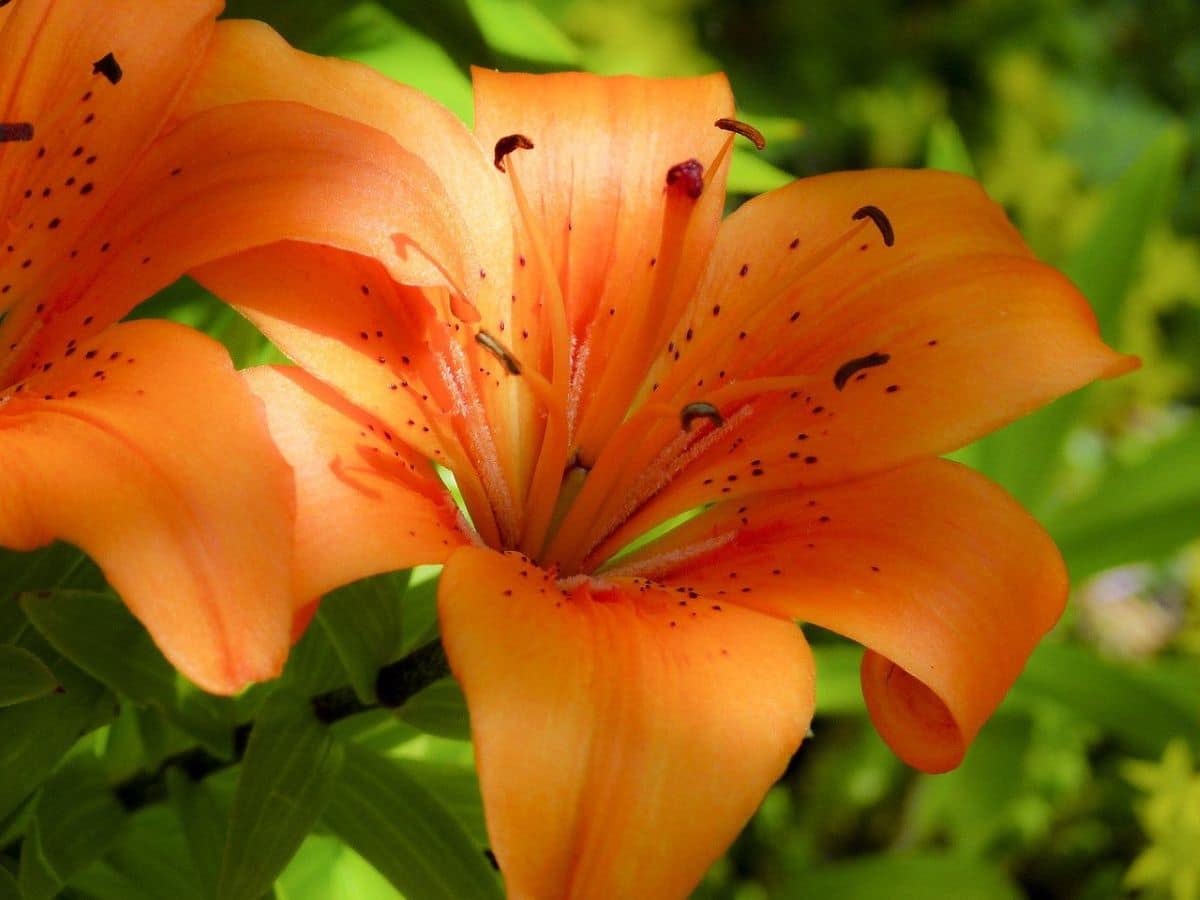
Known as bulbous lily or red lily, it is a native plant of Europe. As one of its common names indicates, produces orange flowers, and of good size also, since they measure about 10 centimeters in diameter.
lilies candidum
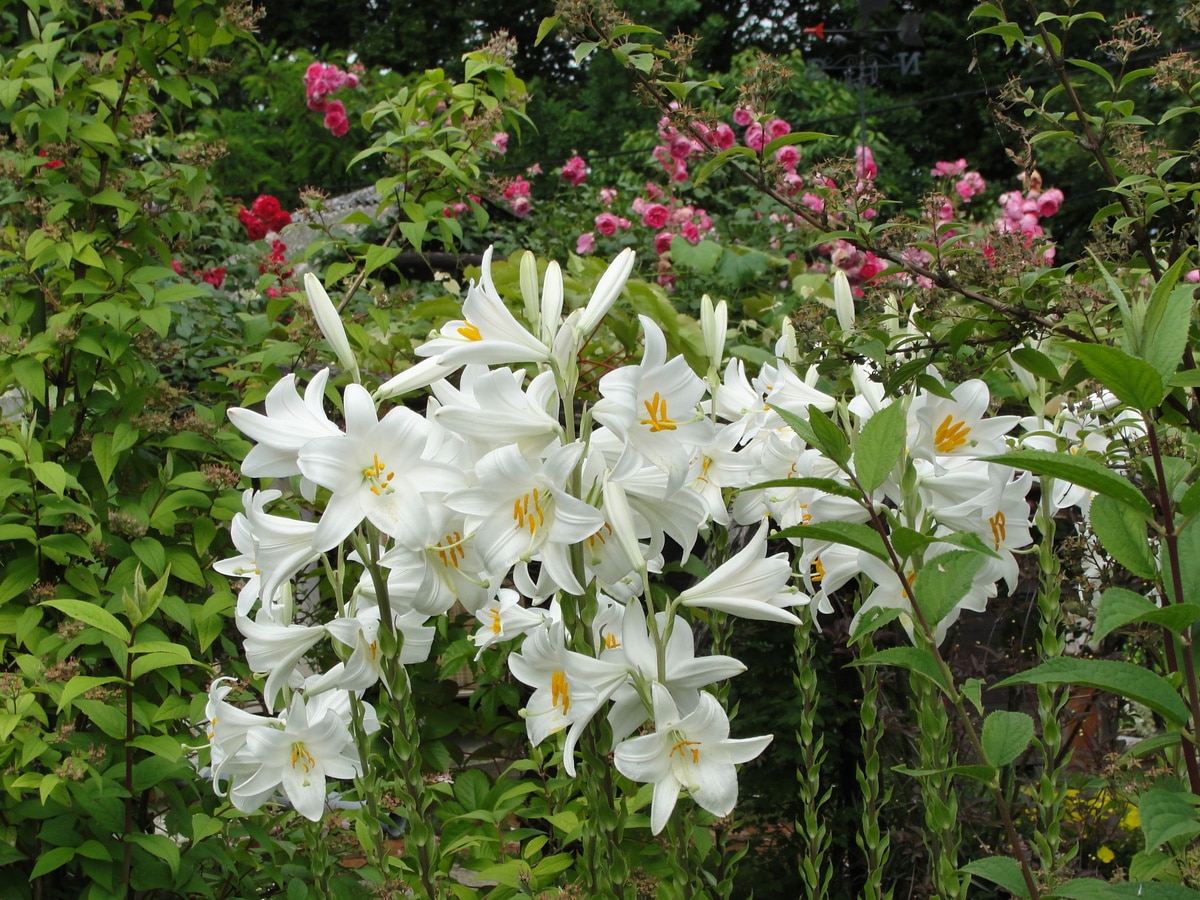
El lilies candidum It is a lively grass native to Syria and Palestine that reaches a height of about 80 centimeters. The flowers are white and they measure about four inches in diameter.
lilium martagon
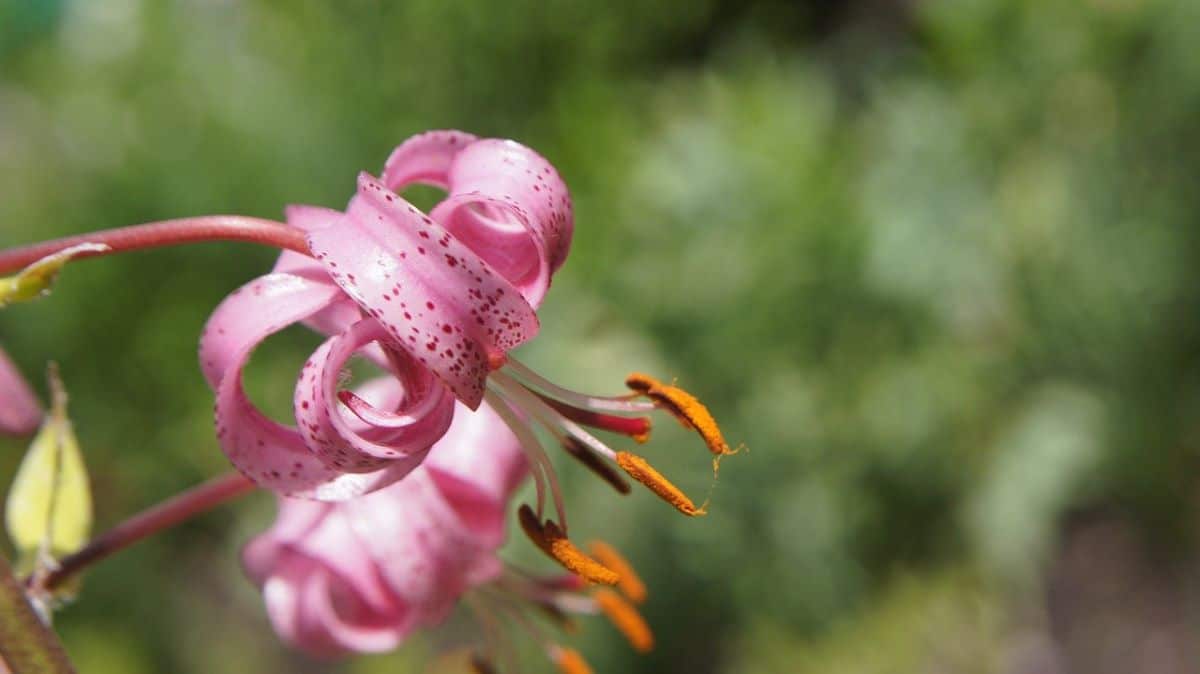
Known as bozo, Martagon or weeping lily, is a bulbous native to Europe, including Spain. Its flowers are relatively small, especially if we compare them with other varieties of lilies. They measure about 3-5 centimeters, and they are pink, lilac, white.
Oriental lilium
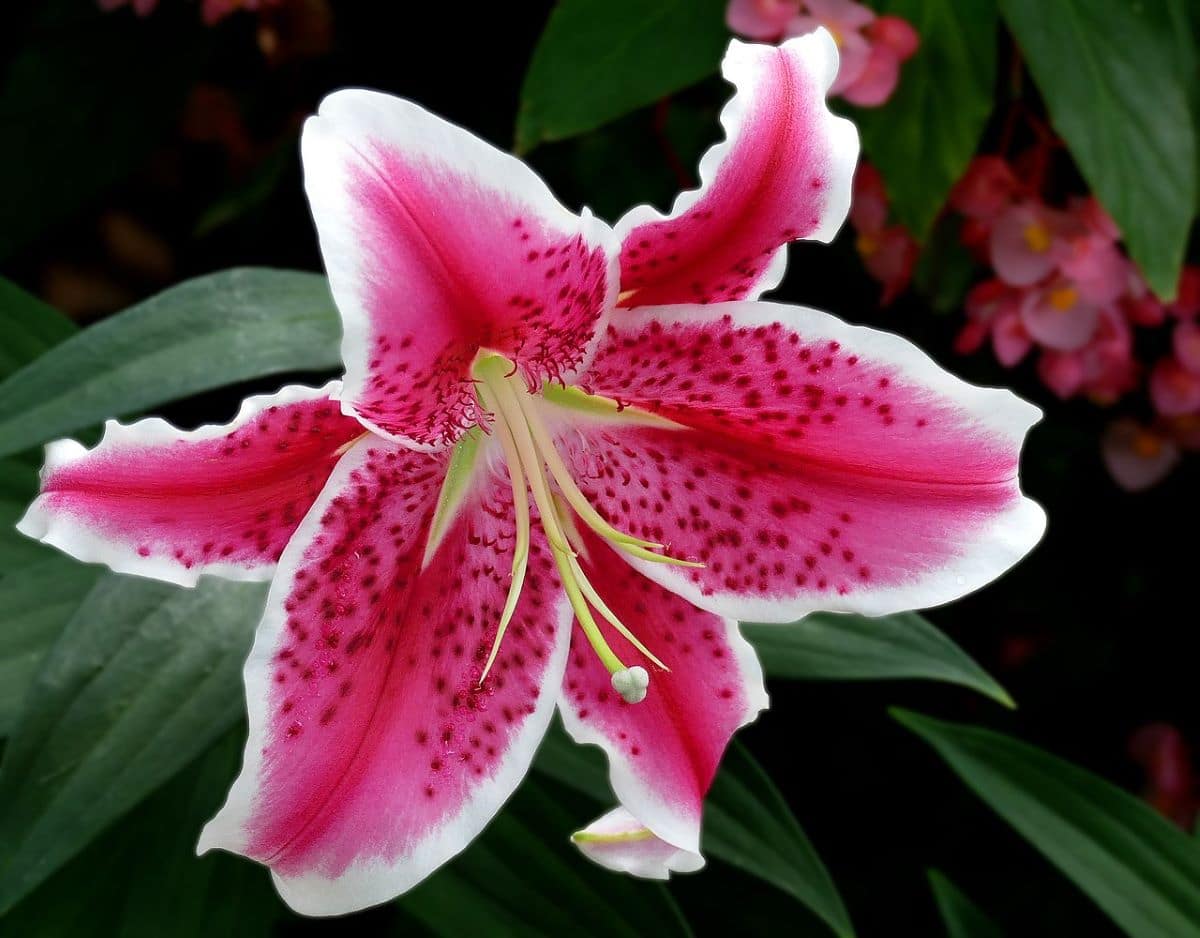
Image - Wikimedia / Jim Evans
How to Live Aligned with Oriental lilium or oriental lily we refer to a series of hybrids originating in Asia. They have large flowers and also smell very good. In this group we highlight the Lilium 'Stargazer', with a dark pink flower; the 'Devotion' with white flower; or the 'Rosato' with a soft pink flower,
Lilium lancifolium
El Lilium lancifolium It is a plant known as the brindle tie flower, and we can find it wild in East Asia. Its flowers are orange with black spots, about 4 centimeters in diameter.
lily longiftorum
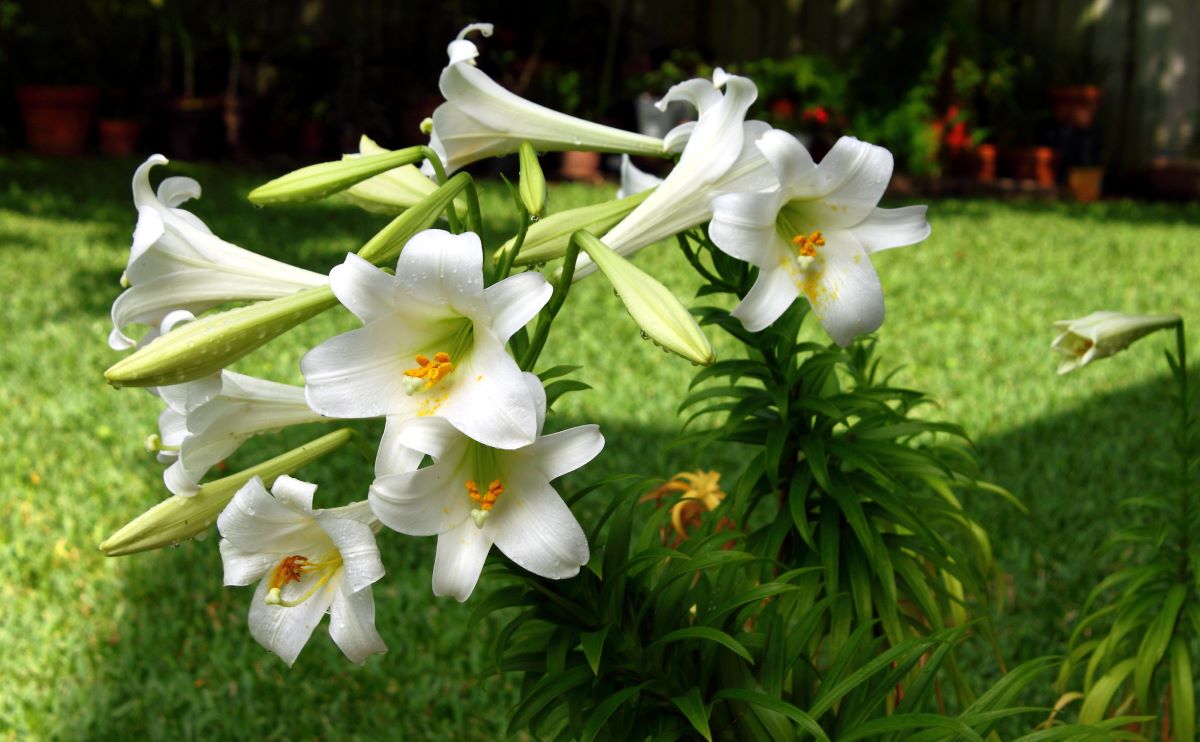
Image - Flickr / A Yee
El lily longiftorum, known as Easter lily is a bulbous native to Japan. It reaches a meter in height, and produces white flowers, with a sweet fragrance. These are about 10-12 centimeters in diameter.
How do you care for a Lilium plant?
Lilies are plants that can be grown in pots, planters, or in the garden. They are widely used to create flower compositions or carpets, as they adapt very well to different environments. But they need a number of things to flourish:
Where to put the lilies?
It is very important that they get a minimum of five hours of direct sunlight each day. These plants do not develop normally when they lack light; in fact, if they were put in shade we would see how their stems grow in the direction of the most intense light source. By doing so, it will give us the impression that they grow fast, but we do not have to think that it is a good thing, because what will happen is that they will weaken.
Soil or substrate
Lily bulbs rot quickly when planted in unsuitable soil, such as very compact and heavy soil. To avoid it, It is necessary that they be light, porous soils, so that the water circulates without impediments. Only then will our plants grow normally.
In the event that they are going to be in a container, such as a flowerpot or planter, it must be taken into account that the substrate must be equally light. For this reason, we recommend mixing for example black peat with 30% perlite.
Irrigation and fertilizer
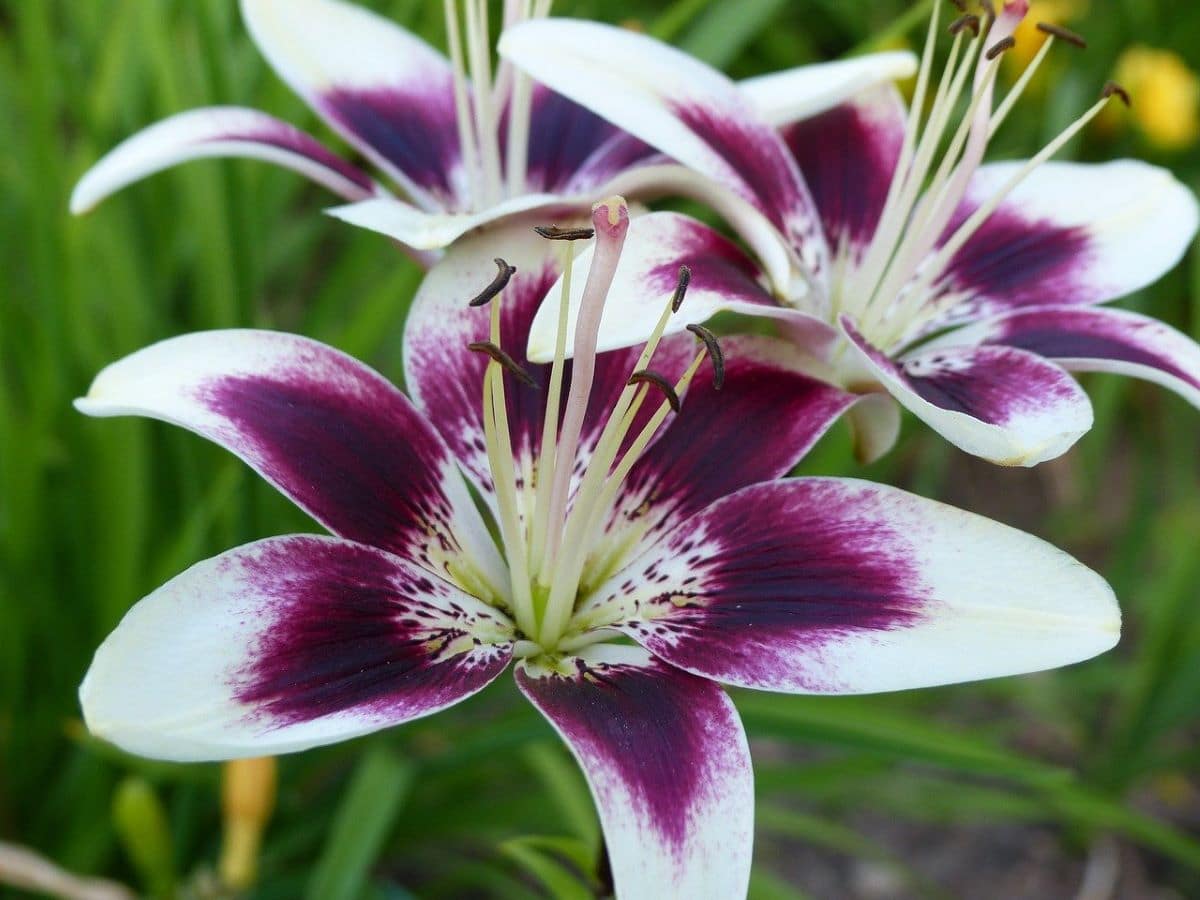
The frequency of irrigation has to change as the seasons go by. In spring and especially summer, since it is when they are growing and the temperatures are warm, we will water them approximately twice a week. But since in autumn and winter they will be at rest, and since the earth also takes longer to dry, we will space the waterings. In fact, if during the autumn and / or winter season it usually rains from time to time, it will only be necessary to moisten the earth if we see it very dry.
So that they give flowers of excellent quality, it is highly recommended to put some mulch on them (on sale here), worm castings, or even compost. But yes, if they are potted, it will be preferable to use liquid fertilizers, following the instructions on the container. And it is that if we put granulated or powdered fertilizers in a pot, the substrate could end up having problems filtering the water; consequently, the roots would be spoiled.
Bulb planting time
If you have bought bulbs, remember to plant them in late winter or early spring. This way, they will have enough time to grow and bring their flowers out in the right season.
Multiplication
Lilies multiply by separating bulbs, and sometimes also by seeds:
- Bulb separation: after flowering, the Lilium should be left in the ground or in a pot for two or three months. After that time, we can dig up the bulbs and separate the small ones. Later, we will plant these in other places, burying them about two centimeters.
- Seeds: the flowers of lilies are hermaphroditic, so if your specimen has seeds, you can sow them in spring in seedbeds such as a tray with holes or in pots, with vermiculite (for sale here) or mulch. Put them in a sunny place, and water from time to time so that the substrate does not dry out. Thus, they will germinate in a month.
Pests
There are a number of pests that affect lilies, and they are:
- Bulb mites: causes damage to the bulb, which becomes rotten. The only effective treatment is preventive, before planting, with insecticides such as diazinon.
- Cryoceros: they are insects that feed on leaves and flowers. Fortunately, they can be prevented and removed with pyrethrins.
- Aphids: these aphids they are located in the new leaves of the plant and in the flower buds. They feed on the sap, so we will see discolored spots and malformations. They can be fought with diatomaceous earth (for sale here).
- Trips: The trips They can affect the bulb, causing malformations and brown spots, and also in the aerial part causing the appearance of spots on flowers and leaves, malformations and general weakening. It is fought with anti-thrips insecticides (such as this).
Management
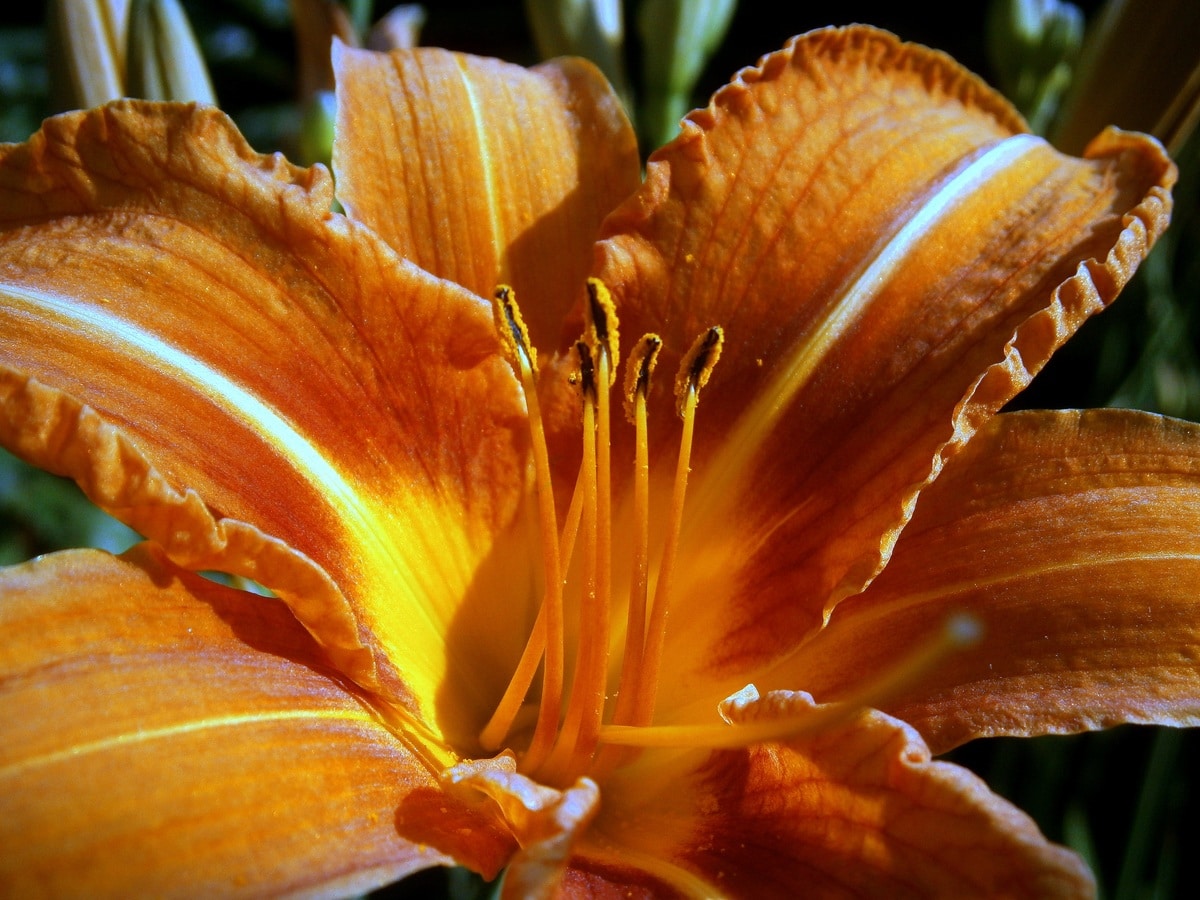
As for diseases, they can have these:
- Botrytis: the botrytis It is a fungus that, in the case of lilies, produces rounded brown spots anywhere (leaves, stems and flowers). It is fought with a fungicide containing copper (for sale here).
- Mottled lily: they are a series of viruses that deform flowers and change the color of the leaves. There is no treatment, except buying healthy plants and bulbs, without the slightest symptoms of disease or plague.
- Phytophthora: it is a fungus that causes dark mauve spots to appear on the stems, specifically at the base. These spots spread throughout the plant, reaching the leaves, which turn yellow. It is treated with fungicides that carry copper.
- Pythium: it is a fungus that rots the roots. In severe cases it can kill the plants. It is also treated with fungicides that carry copper.
- rhizoctonia: it is a fungus that rots the bulb. The leaves weaken, and the flower buds may not open. There is no effective treatment; it is better to get rid of affected plants.
- Lily necrotic spot virus (LSV): They are viruses that cause the appearance of chlorotic spots on the leaves. They start out yellowish with an elongated shape, and then turn black. The flowers are deformed, and the plant weakens. There is no treatment either.
Rusticity
Lilium's resistance to cold varies depending on the species and its origin. But in general we talk about plants that withstand low temperatures down to -4ºC.
What is the meaning of lilies?
If you want to know what meaning these flowers have according to their color, then we are going to talk to you about it:
- Lilium yellow: it is a showy, showy flower that symbolizes joy, life, and gratitude.
- White lilium: the white lily is the symbol of innocence and purity.
- Orange lilium: it is the representation of spirit, optimism, creativity and also a growing love.
- Red lilium: red lilies symbolize love as a couple, and passion.
- Pink lilium: pink lilies symbolize youth, tenderness and good work.
Where to buy?
If you would like to have lilies, click here and get your mix of bulbs:
No products found.
